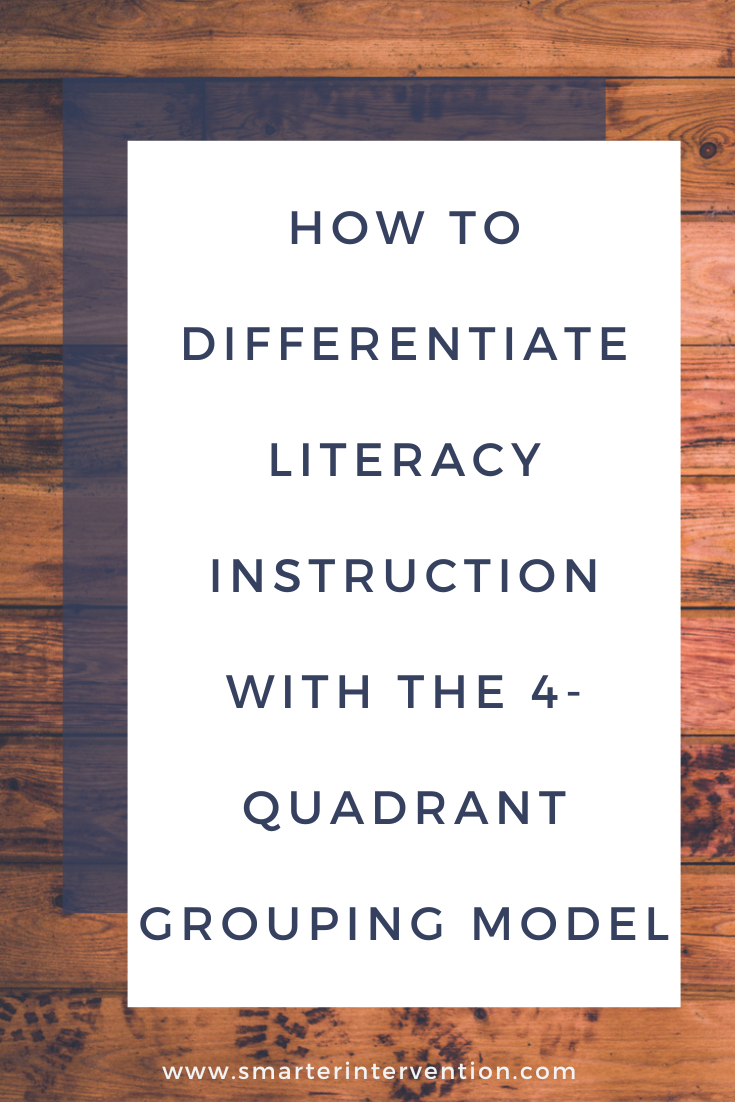How to Differentiate Literacy Instruction with the 4-Quadrant Grouping Model
Why Grouping Matters
If you’ve ever been told to “differentiate your instruction” without being given the tools to do it, you’re not alone.
Grouping students effectively is one of the most powerful ways to meet individual needs, but only if you’re grouping based on what students actually need instructionally, not based on general labels like “low readers.”
That’s where the 4-Quadrant Grouping Model comes in.
This model helps you quickly identify where support is needed (word recognition, language comprehension, or both) and group students accordingly so your instruction can be targeted, efficient, and impactful.
Why We Group by Need, Not Just Score
Reading is complex, and students struggle for different reasons. The Simple View of Reading tells us that students need word recognition and language comprehension to read fluently and understand what they read.
When we assess which of those areas is breaking down, we can stop guessing and start delivering instruction that sticks.
The 4 Quadrant Grouping Model Explained
Using the data you’ve collected, place students into one of four quadrants:
Let’s start with Group A (Enrichment + Extension) -
On or above grade level. Benefit from enrichment, book clubs, deeper comprehension discussion, and writing work. These students are your fluent, confident readers. Instruction can focus on:
Deepening comprehension
Building inferential thinking and vocabulary
Independent and collaborative reading projects
Integration with writing and discussion
Instructional focus: Application, extension, cross-curricular literacy
Let’s move on to Group B (Support Word Recognition) -
Need phonics and decoding instruction. Likely accurate in oral language, but struggle with print. These students have strong oral language, but struggle with:
Phonological awareness
Phonics and decoding
Fluency with unfamiliar words
Instructional focus:
Explicit, systematic phonics instruction
Fluency work with decodable texts
High repetition, predictable routines
Sound drills, blending, segmentation, syllable types
Then, Group C (Support Language Comprehension) -
Need support building comprehension strategies and academic language. These students read fluently but struggle to understand what they read. Often, these students:
Do well on decoding and fluency tasks
Struggle with vocabulary, syntax, or inferencing
May not have strong oral language or background knowledge
Instructional focus:
Vocabulary (especially CFSA strategies)
Syntax + sentence structure
Strategy-based comprehension instruction
Oral language discussion routines
And finally, Group D -
These students need support in both decoding and comprehension. Often, these are your students with:
Language-based learning disabilities
Gaps in early reading instruction
Limited exposure to rich oral language or books
Instructional focus:
Build decoding first (start with phonological awareness and phonics)
Simultaneously support vocabulary and oral comprehension
Focused intervention with plenty of scaffolding and spiraling
Using Your Groupings for Differentiated Instruction
Once students are placed in a quadrant:
Plan small-group instruction that targets their needs
Adjust whole-group scaffolds to ensure everyone is supported
Use these groupings to guide IEP goals, pull-out supports, or home-based instruction
Tip: These groupings are flexible. Reassess every 6–8 weeks or as new data becomes available.
Takeaway: Grouping Should Feel Empowering, Not Overwhelming
You don’t need to differentiate everything to make a big impact. By identifying what your students truly need you can make your intervention and small-group instruction more effective (and less stressful).
Grab our free lesson planning guides to get a copy of our 4-Quadrant Grid and grouping organizer!
Click here to download the free guides.
Want to take this a step further?
Differentiation doesn’t have to be overwhelming. In our Free Delivering Effective Literacy Intervention Training (elementary and secondary), we’ll show you exactly how to use grouping models and lesson structures to make instruction clearer, simpler, and more effective.
👉 Learn more about the free training options here!



